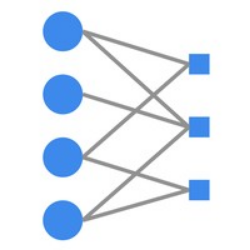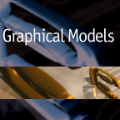We investigate a correspondence between two formalisms for discrete probabilistic modeling: probabilistic graphical models (PGMs) and tensor networks (TNs), a powerful modeling framework for simulating complex quantum systems. The graphical calculus of PGMs and TNs exhibits many similarities, with discrete undirected graphical models (UGMs) being a special case of TNs. However, more general probabilistic TN models such as Born machines (BMs) employ complex-valued hidden states to produce novel forms of correlation among the probabilities. While representing a new modeling resource for capturing structure in discrete probability distributions, this behavior also renders the direct application of standard PGM tools impossible. We aim to bridge this gap by introducing a hybrid PGM-TN formalism that integrates quantum-like correlations into PGM models in a principled manner, using the physically-motivated concept of decoherence. We first prove that applying decoherence to the entirety of a BM model converts it into a discrete UGM, and conversely, that any subgraph of a discrete UGM can be represented as a decohered BM. This method allows a broad family of probabilistic TN models to be encoded as partially decohered BMs, a fact we leverage to combine the representational strengths of both model families. We experimentally verify the performance of such hybrid models in a sequential modeling task, and identify promising uses of our method within the context of existing applications of graphical models.
翻译:我们调查了两种离散概率建模形式之间的对应关系:概率图形模型(PGMs)和高压网络(TNs),这是模拟复杂量子系统的强大模型框架。 PGMs和TNs的图形计算显示许多相似之处,离散非方向图形模型(UGMs)是TNs的一个特例。然而,更普遍的概率模型(如Born机器(BMs))利用复杂价值的隐藏型模型,在概率模型之间产生新形式的关联。虽然这是在离散概率分布中捕捉结构的新建模资源,但这种行为也使得直接应用标准PGM工具成为不可能。我们的目标是通过采用混合的PGM-T格式(UGM-T)来弥合这一差距,将量性关系纳入PGM模型(UGMs)的一个特殊案例。然而,我们首先证明,对整个双向的双向型双向型模型应用分立式模型,将现有的双向型模型转换成一个离心型模型,反过来说,在这种离心型模型中的任何分级模型中,可以使离式模型能够部分地将UGMBGM法用于。





